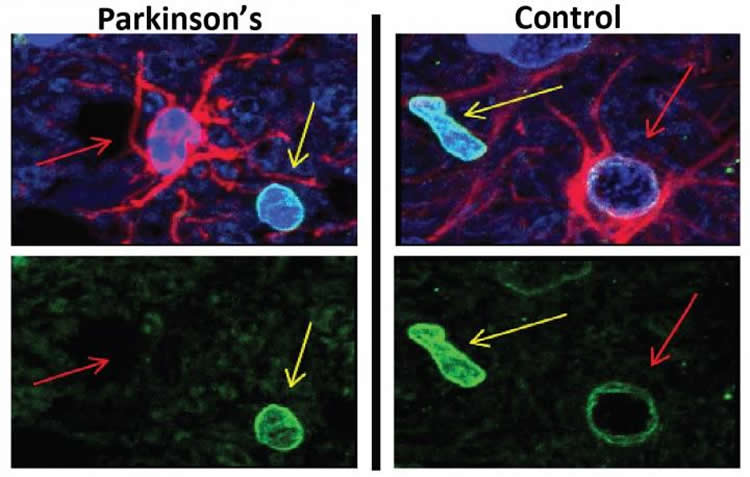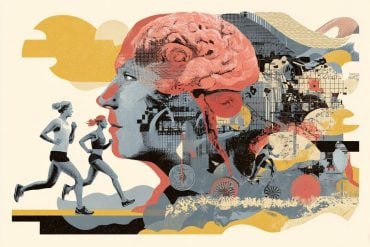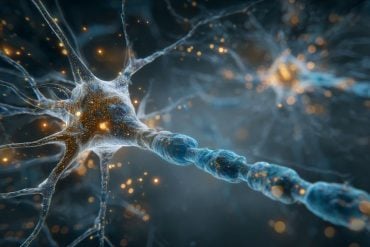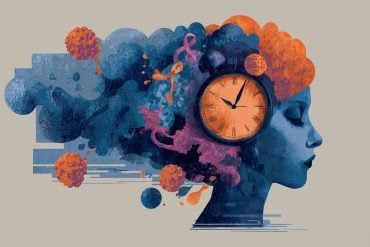Summary: A new study reports researchers have identified a possible new avenue for treating Parkinson’s symptoms and neuropathology. Clearing senescent astrocytes appears to help prevent sporadic versions of the disease triggered by exposure to pesticides.
Source: Buck Institute.
Systemic clearing of senescent astrocytes prevents Parkinson’s neuropathology and associated symptoms in a mouse model of sporadic disease, the type implicated in 95% of human cases. Publishing in Cell Reports, researchers in the Andersen lab at the Buck Institute provide a new potential therapeutic avenue for the incurable, progressive neurological disorder that affects up to one million Americans, robbing them of the ability to control movement.
Senescent cells, which stop dividing in response to stress, secrete deleterious factors that cause tissue damage and lead to chronic inflammation. In this study, senescence was triggered by exposure to the pesticide paraquat, a neurotoxin formally linked to the development of Parkinson’s disease in farmworkers in 2011.
“While senescence has been implicated in Parkinson’s and other neurodegenerative disease, we believe this is the first time that clearing the inflammatory cells prevented symptoms from developing in a live mammal,” said Julie K. Andersen, PhD, Buck professor and senior author on the paper. “We hope that the fact that we were able to do this in a sporadic, rather than genetic, model of Parkinson’s, highlights its relevance as a potential new way to tackle the most prevalent form of the disease.”
This research is unusual given that it focuses on senescence in astrocytes, so called “helper” cells that perform a variety of tasks, from axon guidance and synaptic support to control of the blood brain barrier and blood flow. Even though astrocytes are the most numerous cell type within the central nervous system, Andersen says they have been underappreciated “stepchildren” in most basic neuroscience research. She says the vast majority of Parkinson’s research has focused on toxicity that directly affects specific neurons implicated in the disease, “but no one has come up with an effective treatment based on that approach. This research suggests that senescent astrocytes may contribute to the development of the disease and we’re excited to explore this avenue.”
The research, led by adjunct faculty Shankar Chinta, PhD and postdoctoral fellow Georgia Woods, PhD, showed that postmortem tissue from patients with Parkinson’s displays increased astrocytic senescence, and that cultured human astrocytes exposed to paraquat become senescent as well.

The mice used in this research were six months old, the human equivalent of about 34 years of age. Andersen’s lab hopes to study the impact of astrocytic senescence in mice at varying stages of lifespan to see if Parkinson’s can be reversed in addition to being prevented. “Chronic inflammation fueled by senescence drives many age-related diseases and it’s quite possible that Parkinson’s is among them,” says Andersen, who adds that astrocytic inflammation may play a role in other neurodegenerative diseases such as Alzheimer’s. “This model gives us a way to expand how we look at and potentially treat a range of maladies,” she says.
There is a desperate need for treatments for Parkinson’s. An estimated seven to 10 million people are living with the disease worldwide. In addition to resting tremor and difficulty with walking and balance, Parkinson’s also leads to cognitive decline and depression with symptoms becoming more severe as the disease progresses. About 5 percent of cases are caused by genetics. The remainder are believed to be caused by a combination of both genetic and environmental factors such as family history, genetic mutations, drinking well water and exposure to pesticides or metal.
Other Buck researchers involved in the study include Shankar J. Chinta, Georgia Woods, Marco Demaria, Anand Rane, Ying Zou, Amana McQuade, Subramanian Rajagopalan, Chandani Limbad, David T. Madden and Judith Campisi.
Funding: The work was supported by grants from the National Institutes of Health grant AG009909, T32-AG000266, Michael J. Fox Foundation, the Ellison Senior Scholar in Aging award, a training grant from the California Institute for Regenerative Medicine, the American-Italian Cancer Foundation and the Buck Institute Impact Circle.
Source: Kris Rebillot – Buck Institute
Publisher: Organized by NeuroscienceNews.com.
Image Source: NeuroscienceNews.com image is credited to Georgia Woods, PhD Buck Institute for Research on Aging.
Original Research: The study will appear in Cell Reports.
[cbtabs][cbtab title=”MLA”]Buck Institute “New Therapeutic Avenue for Parkinson’s.” NeuroscienceNews. NeuroscienceNews, 23 January 2018.
<https://neurosciencenews.com/astrocytes-parkinsons-8356/>.[/cbtab][cbtab title=”APA”]Buck Institute (2018, January 23). New Therapeutic Avenue for Parkinson’s. NeuroscienceNews. Retrieved January 23, 2018 from https://neurosciencenews.com/astrocytes-parkinsons-8356/[/cbtab][cbtab title=”Chicago”]Buck Institute “New Therapeutic Avenue for Parkinson’s.” https://neurosciencenews.com/astrocytes-parkinsons-8356/ (accessed January 23, 2018).[/cbtab][/cbtabs]






